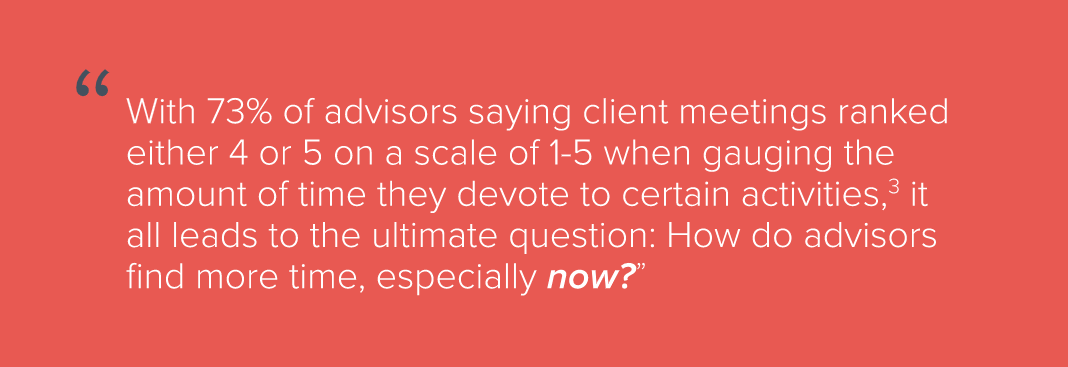Written by: Kevin McCrossin
There When They Need You Most
Financial advisors are asked to wear a lot of hats. A lot. There’s investment management (portfolio construction, research, trading and rebalancing, due diligence, monitoring), there’s practice management (compliance, HR, back-office operations, IT), and there’s client management (client meetings, prospecting, financial planning and reporting, client service issues).
And if that wasn’t enough, they now have to explain whipsawing markets to nervous clients while dodging the threat of COVID.
But as the advice industry continues to evolve into more of a relationship industry, and with more and more advisors coming to the realization that they are, in fact, only one person, many are now trying desperately to carve out more time for what they see as their number 1 revenue-generator—client building.
As such, the time-consuming and complicated minutiae that comes with investment management is being viewed more commonly as a part of the business that can be handled elsewhere, with the hopes of opening up more time for advisors to nurture valuable client relationships.
Client Building Is Business Building
While it goes without saying that time is not always on an advisor’s side, it bears repeating: in an average year, much of an advisor’s time is consumed by administrative activities while time for client relationships gets sacrificed. This is particularly damaging when we know that more time spent on client activities has been proven to lead to growth in number of clients and AUM1. Limited time for smaller practices becomes even more evident, as they often have fewer resources equipped to handle all the demands of practice and portfolio management. In turn, this can lead to having far less time available to meet with existing clients or prospect for new ones.

Not that it’s ever been easy for advisors to balance portfolio construction and practice management with client relationship building. Even before COVID, there is data to suggest that the majority of advisors struggle to consistently improve risk-adjusted results by acting as their own portfolio manager. It seems they can, however, generate more meaningful results by emphasizing financial planning and behavioral coaching (i.e., more time spent on client communications)—to the tune of approximately 150 bps.2
Of course, this requires finding more time to spend on client engagement, particularly as The New Normal creates new pressures on advisors to accommodate mounting client concerns during uncertain times.
Is Outsourcing a Cost-Effective Time Saver?
With 73% of advisors saying client meetings ranked either 4 or 5 on a scale of 1-5 when gauging the amount of time they devote to certain activities,3 it all leads to the ultimate question: How do advisors find more time, especially now?

Many advisors have been turning to outsourcing certain functions to stay competitive, an option that was already trending pre-virus. In 2018, Fidelity conducted a study that found many advisors said they had a successful experience working with a third-party service provider, and that many advisors who outsourced certain functions reported growth in the number of clients and AUM.
We have our own thoughts on how the COVID-induced disruption has affected advisors—many of whom were already pressed for time before the pandemic—and how the need for outsourcing could be even more prevalent as we enter a new era. To find out more, please read Beyond 2020: Future-Proofing Your RIA.
Related: How Direct Indexing Can Help Keep Client Fees Low and Reinforce Your Value-Add
1 FIDELITY. FINANCIAL ADVISOR COMMUNITY: OUTSOURCING TRENDS. 2018.
2 VANGUARD’S RESEARCH. “PUTTING A VALUE ON YOUR VALUE: QUANTIFYING VANGUARD ADVISOR’S ALPHA.” 2019.
3 WEALTHMANAGEMENT.COM, RAYMOND JAMES. RIA BEST PRACTICES. “ADVISORS REMAIN FOCUSED ON CLIENT RELATIONSHIPS”. 2019.

